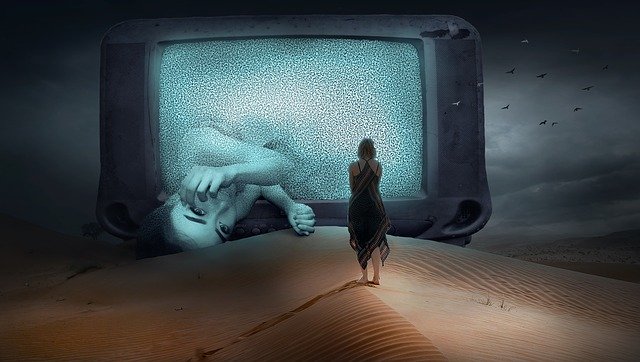hd full form computer High-definition
hd full form computer High-definition television describes a television
providing a picture resolution of considerably higher resolution than the
previous generation of technology. The term has been used since 1936,[1]
however in present refers to the generation following standard-definition tv
(SDTV), typically abbreviated to TV. it’s this customary video format employed
in most broadcasts: terrestrial broadcast tv, cable tv, television, Blu-ray
discs, and streaming video.
providing a picture resolution of considerably higher resolution than the
previous generation of technology. The term has been used since 1936,[1]
however in present refers to the generation following standard-definition tv
(SDTV), typically abbreviated to TV. it’s this customary video format employed
in most broadcasts: terrestrial broadcast tv, cable tv, television, Blu-ray
discs, and streaming video.
hd full form computer High-definition HDTV is also transmitted in varied formats
720p 1280×720 progressive scan: 923,600 pixels (~0.92 MP) per frame
1080i one920×1080 interlaced: 1,036,800 pixels (~1.04 MP) per field or
a pair of,073,600 pixels (~2.07 MP) per frame
a pair of,073,600 pixels (~2.07 MP) per frame
1080p one920×1080 progressive scan: not a broadcast customary for ATSC
1.0
1.0
Some countries additionally use a non-standard CEA resolution, like
1440×1080i: 777,600 pixels (~0.78 MP) per field or one,555,200 pixels (~1.56
MP) per frame
1440×1080i: 777,600 pixels (~0.78 MP) per field or one,555,200 pixels (~1.56
MP) per frame
When transmitted at 2 megapixels per frame, TV provides concerning 5
times as several pixels as South Dakota (standard-definition television). The
redoubled resolution provides for a clearer, a lot of elaborate image.
times as several pixels as South Dakota (standard-definition television). The
redoubled resolution provides for a clearer, a lot of elaborate image.
additionally, progressive scan and {better} frame rates end in an image
with less flicker and better rendering of quick motion.[2] TV as is thought
nowadays 1st started official broadcasting in 1989 in Japan, underneath the
MUSE/Hi-Vision analog system.[3] TV was wide adopted worldwide within the late
2000s
with less flicker and better rendering of quick motion.[2] TV as is thought
nowadays 1st started official broadcasting in 1989 in Japan, underneath the
MUSE/Hi-Vision analog system.[3] TV was wide adopted worldwide within the late
2000s
hd full form history
Since 1917, high definition starts as Full image kind.
The term high definition once delineated
a series of tv systems originating from August 1936; but, these systems
were solely high definition in comparison to earlier systems that were
supported mechanical systems with as few as thirty lines of resolution. the
continuing competition between firms and nations to form true “HDTV”
spanned the whole twentieth century, as every new system became higher
definition than the last. within the 2010s, this race has continued with 4K, 5K and 8K systems.
The term high definition once delineated
a series of tv systems originating from August 1936; but, these systems
were solely high definition in comparison to earlier systems that were
supported mechanical systems with as few as thirty lines of resolution. the
continuing competition between firms and nations to form true “HDTV”
spanned the whole twentieth century, as every new system became higher
definition than the last. within the 2010s, this race has continued with 4K, 5K and 8K systems.
The British high-definition TV service started trials in
August 1936 and a daily service on a pair of Nov 1936 exploitation each the
(mechanical) Baird 240 line sequent scan (later to be inaccurately rechristened
‘progressive’) and also the (electronic) Marconi-EMI 405 line reticular
systems. The Baird system was discontinued
in Gregorian calendar month 1937.[1] In 1938 France followed with their
own 441-line system, variants of that were conjointly employed by variety of
alternative countries. The US NTSC 555-line system joined in 1941. In 1949
France introduced a good higher-resolution normal at 819 lines, a system that
ought to are high definition even by today’s standards, however was monochrome
solely and also the technical limitations of the time prevented it from
achieving the definition of that it ought to are capable.
August 1936 and a daily service on a pair of Nov 1936 exploitation each the
(mechanical) Baird 240 line sequent scan (later to be inaccurately rechristened
‘progressive’) and also the (electronic) Marconi-EMI 405 line reticular
systems. The Baird system was discontinued
in Gregorian calendar month 1937.[1] In 1938 France followed with their
own 441-line system, variants of that were conjointly employed by variety of
alternative countries. The US NTSC 555-line system joined in 1941. In 1949
France introduced a good higher-resolution normal at 819 lines, a system that
ought to are high definition even by today’s standards, however was monochrome
solely and also the technical limitations of the time prevented it from
achieving the definition of that it ought to are capable.
All of those systems
used interlinking and a 4:3 ratio except the 240-line system that was
progressive (actually delineated at the
time by the technically correct term “sequential”) and also the
405-line system which started as 5:4 and later modified to 4:3. The 405-line
system adopted the (at that time) revolutionary plan of reticular scanning to
beat the glint downside of the 240-line with its twenty five cycles/second
frame rate. The 240-line system might have doubled its frame rate however this
could have meant that the transmitted signal would have doubled in information
measure, associate degree unacceptable choice because the video baseband
information measure was needed to be less than three megahertz.
used interlinking and a 4:3 ratio except the 240-line system that was
progressive (actually delineated at the
time by the technically correct term “sequential”) and also the
405-line system which started as 5:4 and later modified to 4:3. The 405-line
system adopted the (at that time) revolutionary plan of reticular scanning to
beat the glint downside of the 240-line with its twenty five cycles/second
frame rate. The 240-line system might have doubled its frame rate however this
could have meant that the transmitted signal would have doubled in information
measure, associate degree unacceptable choice because the video baseband
information measure was needed to be less than three megahertz.
Color broadcasts started at equally higher resolutions,
initial with the US NTSC color system in 1953, that was compatible with the
sooner monochrome systems and so had a similar 525 lines of resolution.
European standards failed to follow till the Sixties, once the PAL and SECAM
color systems were superimposed to the monochrome 625 line broadcasts.
initial with the US NTSC color system in 1953, that was compatible with the
sooner monochrome systems and so had a similar 525 lines of resolution.
European standards failed to follow till the Sixties, once the PAL and SECAM
color systems were superimposed to the monochrome 625 line broadcasts.
The NHK (Japan Broadcasting Corporation) began conducting
analysis to “unlock the elemental mechanism of video and sound
interactions with the 5 human senses” in 1964, when the national capital
Olympiad. NHK launched to form an video system that finished up rating a lot of
higher in subjective tests than NTSC’s antecedently dubbed “HDTV”.
This new system, NHK Color, created in 1972, enclosed 1125 lines, a 5:3 ratio
and sixty cycles/second refresh rate.
analysis to “unlock the elemental mechanism of video and sound
interactions with the 5 human senses” in 1964, when the national capital
Olympiad. NHK launched to form an video system that finished up rating a lot of
higher in subjective tests than NTSC’s antecedently dubbed “HDTV”.
This new system, NHK Color, created in 1972, enclosed 1125 lines, a 5:3 ratio
and sixty cycles/second refresh rate.
The Society of movie and tv Engineers
(SMPTE), headed by Charles Ginsburg, became the testing and study authority for
video technology within the international theater. SMPTE would check video
systems from totally different firms from each conceivable perspective, however
the matter of mixing the various formats overrun the technology for several
years.
(SMPTE), headed by Charles Ginsburg, became the testing and study authority for
video technology within the international theater. SMPTE would check video
systems from totally different firms from each conceivable perspective, however
the matter of mixing the various formats overrun the technology for several
years.





